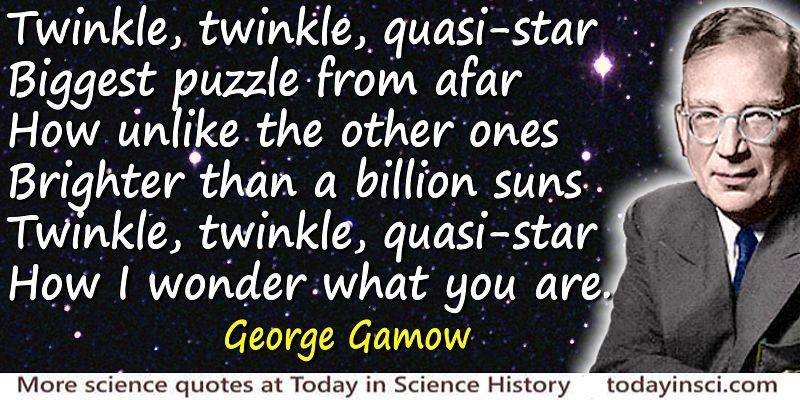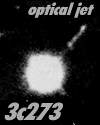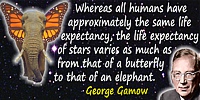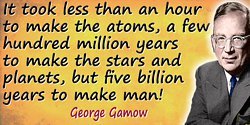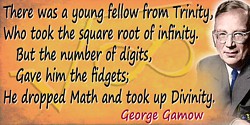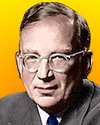 (source)
(source)
|
George Gamow
(4 Mar 1904 - 19 Aug 1968)
Russian-American nuclear physicist, cosmologist and writer who embraced the Big Bang Theory to explain the origin of the universe. Later in his career, he broadened his field of study into biochemistry, DNA and genetic theory.
|
George Gamow
“Twinkle, twinkle, quasi-star”
Illustrated Quote - Large (800 x 400 px)
Biggest puzzle from afar
How unlike the other ones
Brighter than a billion suns
Twinkle, twinkle, quasi-star
How I wonder what you are.”
More George Gamow quotes on science >>
George Gamow’s parody of a nursery rhyme was quoted in passing in an article a May 1964 issue of Newsweek that gave extensive coverage over many pages to the subject of the exciting new discovery of quasars. J. Robert Oppenheimer was also quoted, for his description of quasars as
“spectacular events of unprecedented grandeur.”
It was only in the previous year, 1963, that the first quasar (quasi-stellar object) had been identified. Maarten Schmidt, using the Hale optical telescope, had studied it as a faint star-like object with a visible jet. Its spectrum featured surprisingly unusual emission lines, which he identified as ordinary hydrogen lines shifted toward longer wavelengths (redshifted) by 16%. If that large shift is due to velocity, it is moving away at one-sixth the speed of light and one of the most distant objects visible.
Schmidt came to this realization on 5 Feb 1963, and he published his interpretation of the surprising facts about the quasi-stellar object in the journal Nature on 16 Mar 1963. He did not use the word “quasar” in the article. That name was coined in print in a May 1964 issue of Physics Today by the Chinese-American astrophysicist, Hong-Yee Chiu, who introduced the use of the contraction for convenience.
Quasars radiate as much energy per second as a hundred or more galaxies, which makes Gamow’s description as “brighter than a billion suns” quite accurate, as well as being “afar.” In fact, though, the study of quasars helped solve a puzzle, providing a final piece of evidence that undermined the Steady State theory of the universe, and supported the Big Bang theory.
- Science Quotes by George Gamow.
- 4 Mar - short biography, births, deaths and events on date of Gamow's birth.
- George Gamow - context of quote “Five billion years to make man” - Medium image (500 x 250 px)
- George Gamow - context of quote “Five billion years to make man” - Large image (800 x 400 px)
- George Gamow - context of quote “Twinkle, twinkle, quasi-star” - Medium image (500 x 250 px)
- Mr Tompkins in Paperback, by George Gamow. - book suggestion.
